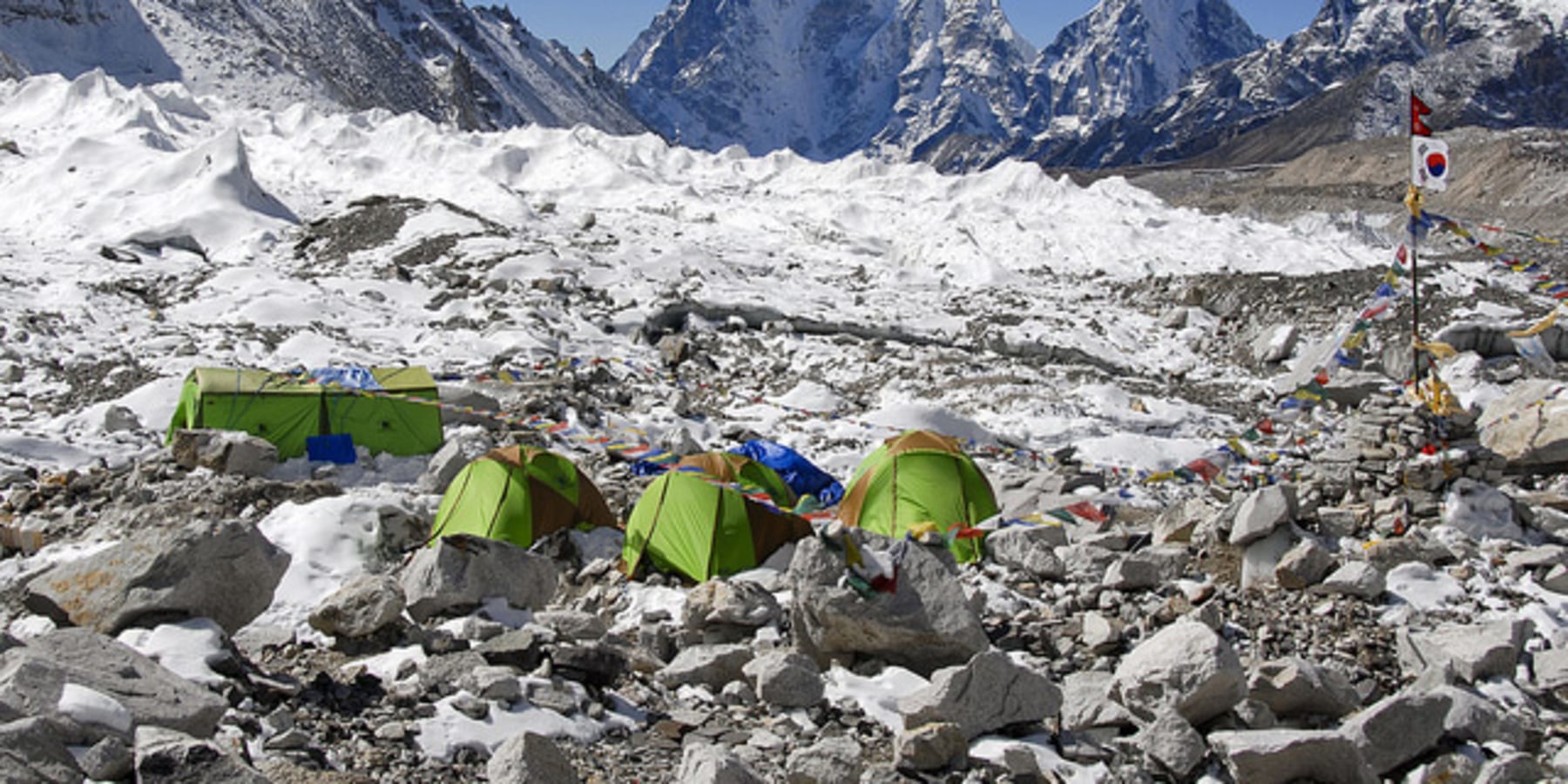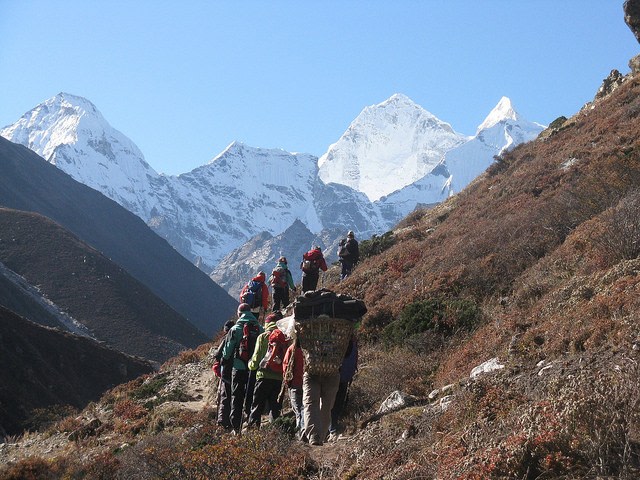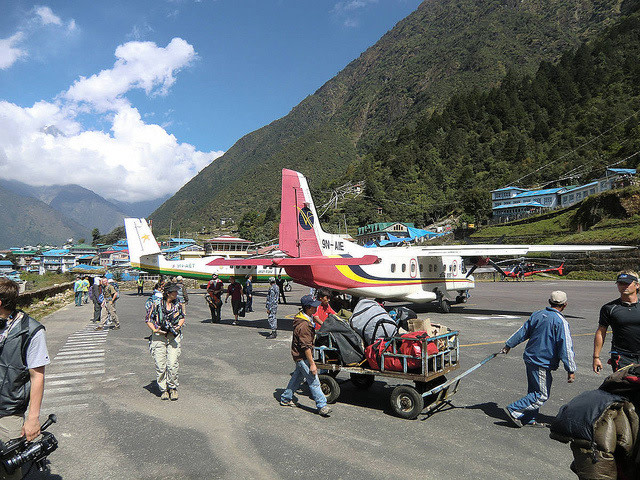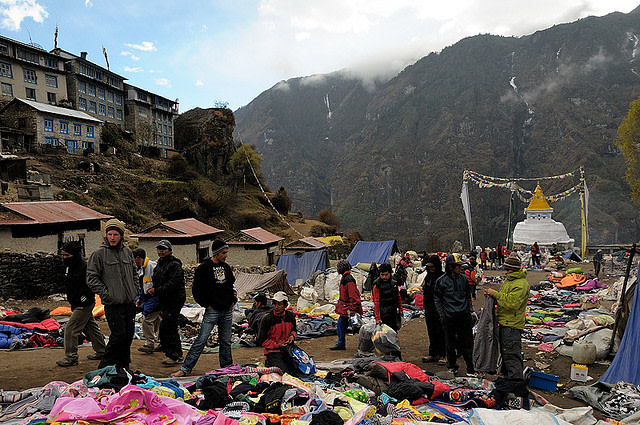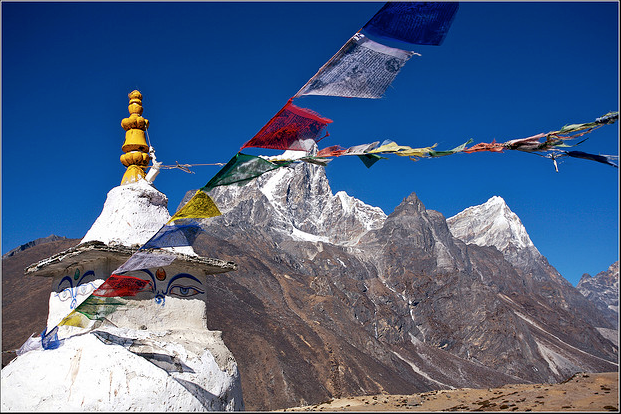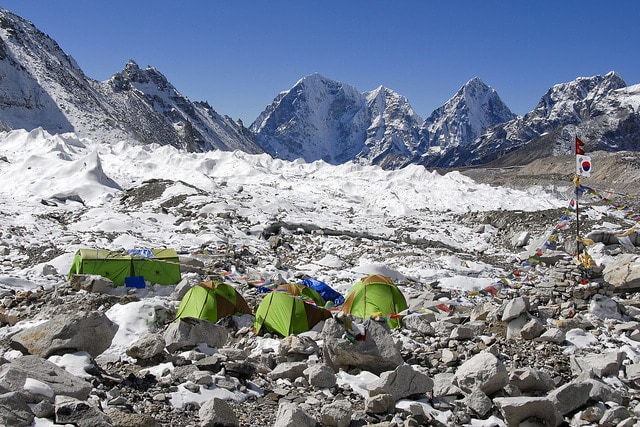| 4 mins read
There are two main destinations that come to mind when travelers think about making the trip out to Nepal: the capital city of Kathmandu and Mount Everest, the tallest mountain in the world. Kathmandu is certainly the easier option of the two, a somewhat modern city endowed with a rich cultural and religious heritage, and mind boggling shopping options not to forget its friendly locals. Mount Everest, on the other hand, is one of those items on a travelers’ bucket list that may never be crossed off. It’s dangerous, difficult, expensive to visit and emotionally/physically draining. For those who wish to see the world’s highest mountain up close but don’t want to risk their lives in doing so, there’s a perfect destination for you: The Mount Everest Base Camp.
Making Your Way to Base Camp
While there are actually two “base camps” that can be accessed by trekkers, the South Side Base Camp, sitting at 5,364 meters above sea level (accessible from Nepal) is the camp most commonly visited (and the one we will explore in this article.) The other camp, North Side Base camp, 5,150 meters up is located on the northern side of Mount Everest, accessible via Tibet.
Travelers looking to trek to the South Side Base Camp (which we will simply call the Mount Everest Base Camp from here on out) will usually fly from Kathmandu’s airport into the Khumbu Region of Nepal (serviced by Lukla Airport). From Lukla, trekkers will begin their journey to the Everest Base Camp via the small service towns of Chheplung, Ghat and Monju, ultimately leading to Namche Bazaar. Already the acclimatization process will be well underway, with most trekkers taking a few rest days in between their first hikes to get physically used to the change in altitude.
Trekkers Beware: Even the most fit hikers will be affected by the sharp change in altitude. Take care, move slow and be mindful of the changes your body is undergoing; altitude sickness can ruin your experience!
Moving Up From Namche
From Namche Bazaar, trekkers will still have about 6-8 days of grueling hiking in front of them to the base camp. Though the daily hikes aren’t that long (time wise), the slow pace, thin air and constant body acclimation make the journeys quite difficult. Along the way there will be plenty of restaurants, tea houses, shops and lodging options in the subsequent towns for the easily distracted/ weary trekker.
Alongside the trekking itself, a major part of the base-camp adventure is soaking in the surrounding Sherpa/Nepali culture. The locals who usually make up for a majority of the mountaineering guides here are extremely helpful, friendly and hospitable, and the surrounding views are some of the world’s best. Get your cameras ready for stunning landscapes, ancient Buddhist monasteries and an infinitude of prayer wheels and flags illustrating the entire way; truly a photographer’s dream.
Trekkers should also take note that the Everest Base Camp Trail is one of the world’s most famous hiking routes; you will not be the only one taking the path! Many a traveler has had to share their accommodation spot with strangers, as the towns leading up to the base camp fill up quickly.
Reach the Everest Base Camp
Reaching the Everest Base Camp is quite the feat in itself. Though most trekkers arriving at this halfway point won’t be continuing on to tackle the 8,848 meter-high peak, celebrations will certainly be in order. Not only have you reached the end point of an arduous 8-day hike, but also the views of Mount Everest and the surrounding majestic Himalayan landscapes will have you spellbound. Hiking to the Everest Base Camp is one of the world’s great trekking accomplishments (next to tackling the peak itself), and as you stare up at the towering white summit, you’ll be proud to be able to cross it off your bucket list.
When to do your EBC Trek? The suggested time to go is from March-May and September-December, when the weather is somewhat stable.
Though trekking to the Everest Base Camp is possible to do on your own, most trekkers and professionals will suggest the guidance of an experienced Everest Base Camp Trekking Guide to augment your memorable journey in achieving one of the world’s most unforgettable destinations.
Image Details and Licenses: https://flic.kr/p/jY956U (NepalGateway Trekking, CC BY-NC-SA 2.0), https://flic.kr/p/8GVvAb (World T.E.A.M. Sports, CC BY-NC-SA 2.0), https://flic.kr/p/7mB76f (Andy Hares, , CC BY-NC-SA 2.0), https://flic.kr/p/4UmGnh (Philip Milne, CC BY-NC-ND 2.0), https://flic.kr/p/99D17r (onthego tours, CC BY-NC 2.0)

